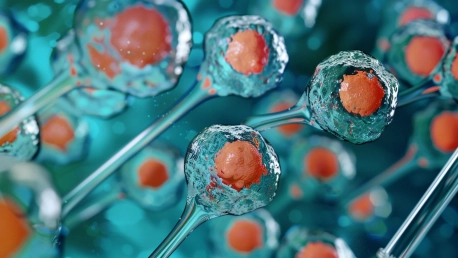The biopharmaceutical industry is on the cusp of a manufacturing evolution, largely due to advancements in analytical technologies. A key player that has emerged in this transformative period is Raman spectroscopy. Renowned for its rapid, nondestructive analysis capabilities, Raman spectroscopy is dramatically enhancing in-line process monitoring and control in cell culture processes, pushing the boundaries of bioprocessing efficiency and product quality.
The Role of Raman Spectroscopy in Cell Culture Monitoring
Real-time Analysis and Non-destructive Nature
Raman spectroscopy has become an invaluable tool in the realm of biopharmaceutical manufacturing. It’s revered for its ability to quickly analyze samples without the need for direct contact or sample preparation. This non-destructive nature of Raman spectroscopy means it can continually monitor the biochemical environment of a cell culture without interrupting the process. Its compatibility with water allows for direct observations within aqueous environments, which is essential considering the predominance of water in biological samples. This facilitates real-time adjustments and closer control over the cell culture process, ensuring higher consistency and quality in biopharmaceutical products.
Multimodal Component Detection
Detecting multiple substances simultaneously is a significant advantage offered by Raman spectroscopy. In the delicate ecosystem of cell culture, where living cells interact with a multitude of nutrients and metabolites, being able to track multiple components at once is crucial for maintaining an optimal environment. Raman spectroscopy can identify and quantify various substances, including proteins and nucleic acids, within the culture, overtaking techniques that may only target a single compound. Such comprehensive monitoring enables manufacturers to better understand the complex biological reactions taking place, streamlining the path toward standardization and automation in biopharmaceutical processes.
Automation and Process Control Advances
Automating Nutrient Additions
One of the most promising aspects of Raman spectroscopy is its role in advancing the automation of nutrient feed in cell cultures. The technology’s precise measurement capabilities allow for the real-time analysis of component concentrations, providing the necessary data required to make immediate adjustments to the culture medium. Automating this process is expected to not only optimize cell growth and productivity but also reduce human error and variability that comes with manual interventions. This stride toward automation signifies a shift to more digitized, controlled, and efficient manufacturing processes that could redefine the biopharmaceutical industry.
Future Applications
The biopharmaceutical sector is on the brink of a significant manufacturing shift, spurred by advanced analytical methods. At the forefront of this change is Raman spectroscopy, recognized for its rapid and non-intrusive analysis. This technique is revolutionizing in-line process monitoring and improving control during cell culture procedures, setting new standards for bioprocessing efficacy and the quality of products. As Raman spectroscopy becomes more integrated, it allows for real-time monitoring, which is pivotal for the precise adjustment of bioprocess parameters, ensuring optimal growth conditions and product consistency. This level of control is crucial for meeting stringent regulatory requirements and accelerating the development of life-saving treatments. This evolution signifies a step forward in precision and reliability for the production of biologics, and Raman spectroscopy is at its heart — an innovation poised to redefine our approach to biomanufacturing.









